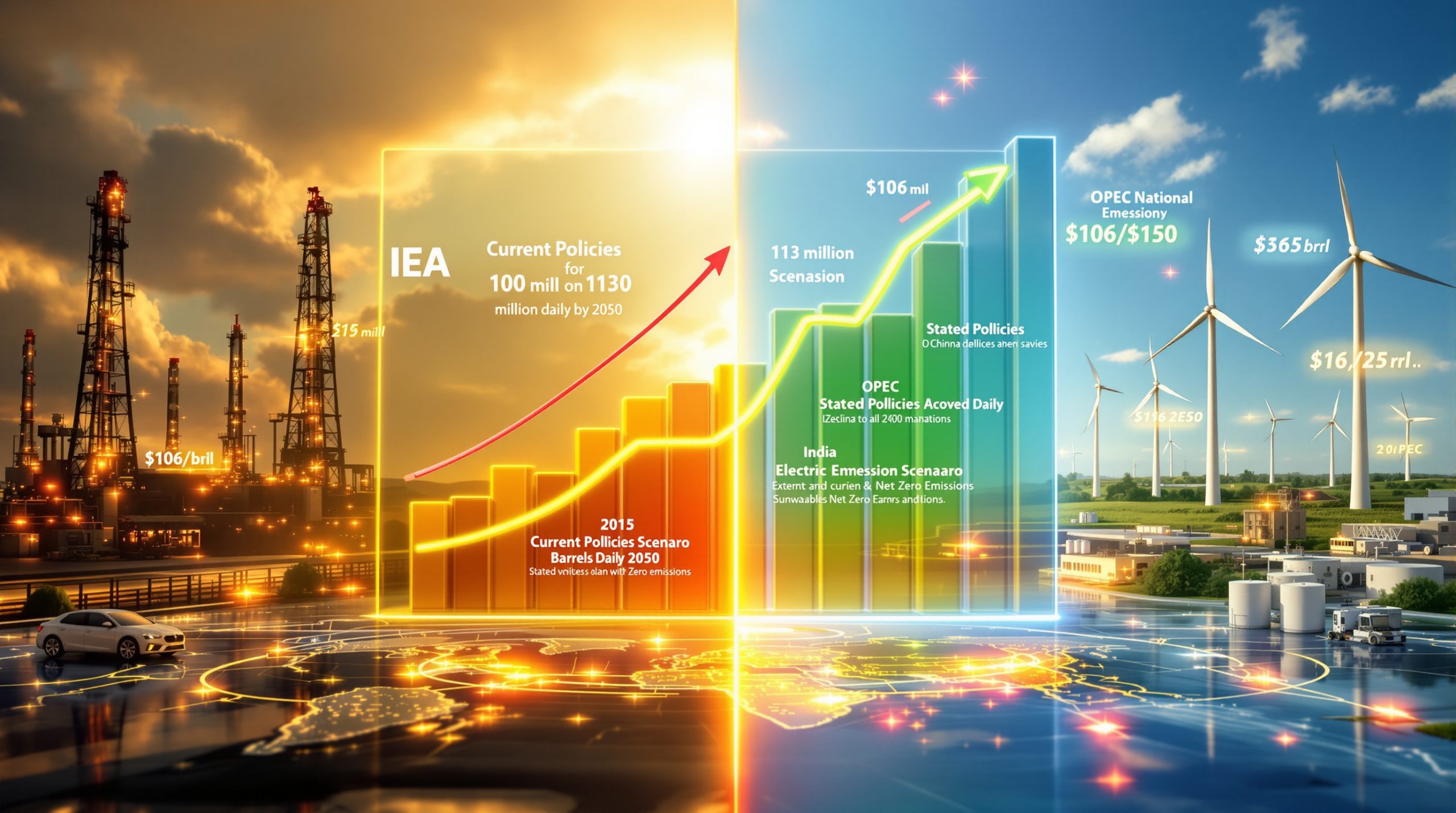What Is the Current State of the Global Nickel Market?
The global nickel market is experiencing a persistent surplus that shows no signs of abating through 2025. According to the International Nickel Study Group (INSG), the market recorded a surplus of 170,000 metric tons in 2023, with projections indicating further increases to 179,000 metric tons in 2024 and 198,000 metric tons by 2025. This growing imbalance between supply and demand presents significant challenges for market participants and investors alike, putting downward pressure on prices while creating opportunities for end-users of the metal.
Key Market Surplus Data
The increasing surplus reflects fundamental shifts in the global nickel supply chain. The 2023 surplus of 170,000 metric tons represented approximately 5.3% of total global production, indicating a substantial oversupply condition. With 2024's projected surplus reaching 179,000 metric tons and 2025's forecast pointing to 198,000 metric tons, the trend shows acceleration rather than moderation of market imbalances.
This persistent and growing surplus is particularly noteworthy given historical nickel market conditions, which have typically featured tighter supply-demand balances. Industry analysts attribute this shift to aggressive capacity expansion, particularly in Indonesia and China, outpacing demand growth from traditional sectors and emerging applications alike.
Global Production and Usage Figures
The scale of global nickel production continues to expand at a remarkable pace. Primary nickel production reached 3.363 million tons in 2023, with projections indicating further growth to 3.526 million tons in 2024 and 3.735 million tons by 2025. This represents a compound annual growth rate of approximately 5.4% over this three-year period.
Meanwhile, primary nickel usage follows a similar upward trajectory but at a slower pace, creating the persistent gap. Usage totaled 3.193 million tons in 2023 and is projected to reach 3.347 million tons in 2024 before climbing to 3.537 million tons in 2025. The compound annual growth rate for usage stands at approximately 5.2%, marginally lower than production growth rates.
This production-consumption gap, while seemingly small in percentage terms, translates to substantial physical tonnage in surplus. Without significant supply disruptions or unexpected demand acceleration, the nickel market forecast and surplus appears structurally oversupplied for the foreseeable future.
Why Is the Nickel Surplus Increasing?
The growing nickel surplus can be attributed to several interconnected factors, with supply-side expansion substantially outpacing demand growth. Understanding these dynamics requires examining the key producing regions and their respective contributions to the global market imbalance.
Indonesian Production Factors
Indonesia remains the dominant force in global nickel production, but recent regulatory developments have introduced new complexities to the market. Mining permit (RKAB) delays have created temporary tightness in ore availability, as regulatory approvals face bureaucratic hurdles. These delays affect mine planning, resource allocation, and production schedules, though not sufficiently to eliminate the overall surplus.
The Indonesian government's implementation of new royalty structures represents another significant development. While the exact rates and implementation timeline remain under discussion, industry participants anticipate higher production costs once finalized. This could potentially temper production growth rates, though the effect is likely to be gradual rather than immediate.
Despite these challenges, Indonesia continues to expand its nickel processing capacity, particularly in nickel pig iron (NPI) and ferronickel production. The country's transition from raw ore exporter to processor of value-added nickel products has transformed global supply chains. Indonesian producers now account for approximately 40% of global refined nickel production, up from less than 10% a decade ago, cementing their position as market leaders.
Chinese Production Expansion
China's role in the nickel market continues to evolve, with significant expansion in both nickel cathode and nickel sulphate production. As the world's primary processor of Indonesian nickel ore, Chinese refiners have invested heavily in capacity expansion to accommodate the growing raw material flows.
Nickel cathode production in China has increased substantially, providing Class 1 nickel for traditional applications like stainless steel and superalloys. Simultaneously, nickel sulphate production capacity has grown rapidly to meet the anticipated demand from the electric vehicle battery sector. This dual expansion strategy has positioned Chinese producers to capitalize on multiple market segments.
The symbiotic relationship between Indonesian mining operations and Chinese processing facilities has created a powerful supply chain that can rapidly respond to market signals. This integration has contributed significantly to the growing surplus, as production efficiencies continue to improve while demand growth follows a more moderate trajectory.
How Has the Nickel Price Responded to Market Conditions?
The nickel price has demonstrated predictable responses to the evolving supply-demand dynamics, with surplus conditions exerting downward pressure on valuations. However, price movements also reflect broader macroeconomic factors, speculative activities, and supply chain disruptions.
Recent Price Movements
Nickel prices have experienced notable volatility amid the growing surplus. In 2024, prices declined approximately 7% compared to 2023 levels, reflecting the market's response to abundant supply. However, early 2025 has witnessed a modest recovery, with prices increasing approximately 3% year-to-date despite continued surplus projections.
This apparent disconnect between fundamentals and price action underscores the complex nature of commodity markets. Short-covering, speculative positioning, and technical factors can temporarily override fundamental surplus conditions, creating price volatility that exceeds what the supply-demand balance might suggest.
London Metal Exchange (LME) warehouse inventories provide another indicator of market conditions, with rising stocks typically corresponding to surplus environments. Throughout 2024 and early 2025, LME inventories have increased steadily, confirming the statistical surplus reported by industry groups like the INSG.
Market Price Drivers
Beyond the basic supply-demand equation, several additional factors influence nickel price formation. The supply-demand imbalance creates a fundamental backdrop of price pressure, with each incremental ton of surplus weighing on market sentiment.
Investor sentiment plays a crucial role in short-term price movements. Institutional investors and commodity trading funds shift positioning based on technical signals, macroeconomic data, and expectations regarding future market developments. This speculative activity can magnify price movements in both directions.
Price volatility in the nickel market exceeds that of many other base metals, reflecting both structural factors and market-specific dynamics. The 2022 nickel market squeeze demonstrated the potential for extreme price movements when market mechanics become distorted, and while such dramatic episodes are rare, they leave lasting effects on market psychology and risk management approaches.
What Are the Key Factors Affecting Nickel Supply?
Supply-side developments remain the primary driver of the nickel market's evolution, with regulatory changes, capacity expansion, and technological advancements all influencing production trajectories.
Indonesian Mining Regulations
Regulatory changes in Indonesia continue to reshape the global nickel landscape. Mining permit delays have introduced an element of uncertainty into production planning, though their effects remain temporary rather than structural. These administrative bottlenecks periodically constrain ore availability but have not fundamentally altered Indonesia's dominant position in the market.
The royalty structure modifications represent a more significant potential impact. By adjusting the financial terms under which mining companies operate, these changes could influence investment decisions and operational strategies. The ultimate market implications remain subject to the final royalty rates and implementation timeline, which continue to evolve through government and industry negotiations.
Indonesian export policies have fundamentally transformed global nickel flows over the past decade. The ban on unprocessed ore exports accelerated domestic processing investments, creating an integrated nickel industry within Indonesia while redirecting global supply chains. This strategic policy shift has enabled Indonesia to capture greater value from its natural resources while ensuring a stable supply of processed nickel to international markets.
Production Capacity Expansion
Global nickel production capacity continues to grow through both greenfield developments and expansions of existing operations. New projects coming online in Indonesia, the Philippines, Australia, and Canada add to global supply potential, though each faces unique challenges related to financing, permitting, and technical feasibility.
Expansions of existing operations offer lower-risk paths to increased production, as they leverage established infrastructure and operational expertise. Many producers have prioritized incremental expansions over entirely new developments, allowing for more flexible responses to market conditions.
Technological advancements in nickel processing have enabled more efficient extraction and refining, particularly for laterite ores that were historically challenging to process economically. High-pressure acid leach (HPAL) facilities, though capital-intensive, can now process lower-grade deposits that were previously uneconomic, expanding the effective resource base and production potential.
How Is Nickel Demand Evolving?
While supply growth captures significant attention, demand trends ultimately determine whether the current surplus will persist or eventually rebalance. Traditional and emerging applications present different growth trajectories and market implications.
Stainless Steel Industry Demand
The stainless steel industry remains the largest consumer of nickel globally, accounting for approximately 70% of total nickel usage. Current consumption patterns show steady but unspectacular growth, with regional variations reflecting broader economic conditions and industrial activities.
Global stainless steel production is forecast to grow at 2.5-3% annually through 2025, providing a stable foundation for nickel demand. However, this growth rate falls short of the more aggressive expansion seen on the supply side, contributing to the persistent market surplus.
Regional variations in stainless steel manufacturing create uneven demand patterns. China remains the dominant producer, accounting for over 50% of global stainless output. European producers face challenges from energy costs and environmental regulations, while North American production shows modest growth supported by reshoring initiatives and infrastructure investments.
Electric Vehicle Battery Applications
The electric vehicle sector represents the most promising growth vector for nickel demand, though recent developments have moderated expectations. Nickel-rich cathode chemistries, particularly nickel-cobalt-manganese (NCM) and nickel-cobalt-aluminum (NCA) formulations, require substantial nickel inputs for high-energy-density batteries.
Growth projections for nickel in battery production remain positive but have been revised downward from earlier estimates. The gradual shift toward higher nickel content in cathodes continues, with NCM 8:1:1 (80% nickel) and NCM 9:0.5:0.5 (90% nickel) formulations gaining market share. However, this trend is partly offset by the parallel growth of lithium iron phosphate (LFP) batteries, which contain no nickel.
Competition from alternative battery technologies presents a significant wild card for nickel demand forecasts. While nickel-containing batteries offer superior energy density, LFP batteries provide cost advantages and safety benefits that make them attractive for certain applications. This technological competition will shape nickel demand trajectories in the coming years, adding uncertainty to long-term forecasts.
What Does the INSG Forecast Mean for Investors?
The International Nickel Study Group's surplus projections have significant implications for investment strategies, market sentiment, and potential turning points in the nickel market.
Investment Implications
The short-term outlook for nickel-focused investments reflects the challenging fundamentals of surplus conditions. Equity investments in pure-play nickel producers face headwinds from compressed margins and uncertain price trajectories. Diversified miners with nickel exposure typically offer better risk-adjusted profiles during surplus periods.
Long-term considerations for the nickel market require balancing the current surplus against eventual demand growth, particularly from the battery sector. Strategic investors with longer time horizons may find value in selectively accumulating positions during periods of price weakness, though timing such entries remains challenging.
Potential turning points in the supply-demand balance could emerge from several sources. Supply disruptions, whether from operational issues, regulatory changes, or geopolitical shift insights, can rapidly alter market balances. Demand acceleration beyond current forecasts, particularly if EV adoption exceeds consensus expectations, could also contribute to market rebalancing.
Market Sentiment Indicators
Institutional investor positioning provides insights into market expectations. Throughout 2024, most institutional investors maintained underweight positions in nickel relative to other base metals, reflecting the surplus conditions. However, early 2025 has seen some repositioning toward more neutral stances, suggesting expectations of eventual market stabilization.
Speculative interest in nickel futures fluctuates with price momentum and technical factors. The managed money position on the London Metal Exchange has oscillated between net short and moderate net long positions, indicating divided sentiment regarding near-term price direction.
Market reactions to surplus projections typically follow predictable patterns, with initial price pressure followed by periods of consolidation as the information gets absorbed. The INSG's successive forecasts of growing surpluses have been incrementally priced into market valuations, though the process is neither perfect nor instantaneous.
FAQs About the Nickel Market Outlook
What is causing the nickel market surplus?
The nickel market surplus stems primarily from production growth outpacing demand growth. Expanded operations in Indonesia and China have substantially increased global nickel supply, while demand growth from traditional sectors like stainless steel remains moderate. Despite growing battery applications, overall consumption has not kept pace with the surge in production capabilities.
Contributing factors include Indonesia's strategic shift toward domestic processing, technological improvements enabling economic extraction from lower-grade deposits, and Chinese investments in refining capacity. These supply-side developments have collectively created a structural oversupply situation that current demand levels cannot absorb.
How might the nickel surplus affect prices in 2025?
The projected surplus of 198,000 tons in 2025 will likely continue to exert downward pressure on nickel prices, though the relationship between surplus size and price impact is not strictly linear. Market expectations, positioning, and technical factors can influence price movements independently of fundamental balances.
Absent significant supply disruptions or unexpected demand acceleration, the persistent surplus environment suggests limited upside potential for nickel prices. However, commodity markets often anticipate future developments, and any signs of potential market rebalancing could trigger price responses before the statistical surplus actually diminishes.
What industries consume the most nickel globally?
Stainless steel production remains the dominant nickel application, accounting for approximately 70% of global consumption. This established industry provides a stable demand base but with limited growth potential relative to capacity expansion.
Batteries for electric vehicles represent the fastest-growing application, though from a smaller base. Currently accounting for approximately 10% of nickel demand, battery applications could potentially double their market share by 2030 if growth trajectories remain intact.
Other significant applications include non-ferrous alloys, plating, and foundry applications, collectively accounting for the remaining 20% of nickel consumption. These diverse applications provide some demand stability through their exposure to different economic sectors and growth drivers.
How reliable are the INSG forecasts historically?
The International Nickel Study Group provides industry-standard forecasts based on comprehensive data collection and analysis methodologies. Historically, INSG forecasts have proven reasonably accurate in identifying market direction and broad magnitude, though precise tonnage predictions inevitably contain margins of error.
Like all commodity forecasts, INSG projections remain subject to unforeseen geopolitical or economic factors that can rapidly alter market conditions. Supply disruptions from weather events, labor disputes, or regulatory changes can significantly impact actual outcomes. Similarly, demand forecasts depend on macroeconomic conditions and sector-specific developments that may deviate from baseline assumptions.
Prudent market participants typically view INSG forecasts as valuable baseline scenarios while developing contingency plans for potential deviations. The growing surplus trend identified in the current forecasts represents a high-confidence directional call, even if the precise magnitude remains subject to adjustment.
For investors interested in diversifying their portfolios, understanding the commodity cycle shift is essential, as nickel represents just one component of broader resource markets. Furthermore, those considering investments in the mining sector should consult a comprehensive mining stocks guide to navigate the complexities of these cyclical investments.
Industry experts continue to update their mining finance predictions as more data becomes available on production capabilities and consumption patterns. Additionally, investors specifically interested in smaller mining companies should explore strategies for junior mining investments to balance risk and opportunity in this volatile sector.
Looking to Capitalise on the Next Mineral Discovery?
Stay ahead of market movements with Discovery Alert's proprietary Discovery IQ model, which instantly identifies significant ASX mineral discoveries and transforms complex data into actionable insights. Explore why major mineral discoveries can lead to substantial returns by visiting Discovery Alert's dedicated discoveries page and begin your 30-day free trial today to gain a market-leading advantage.




